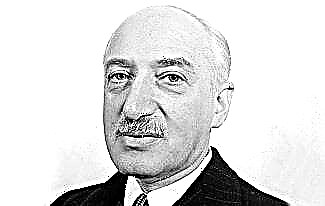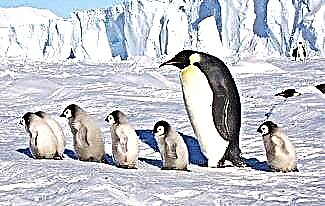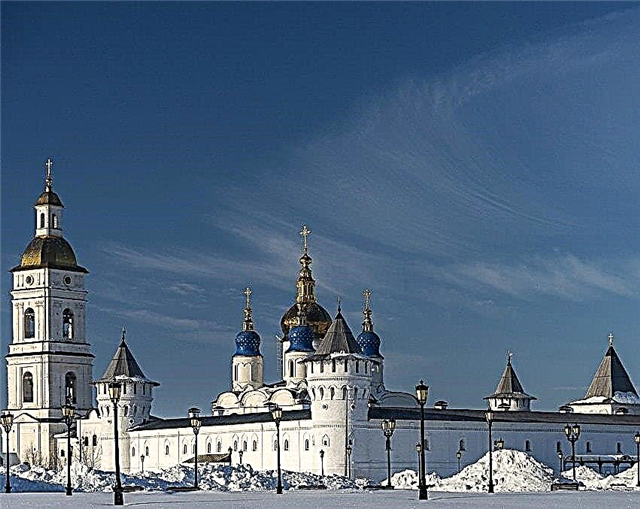Alexander Alexandrovich Fridman (1888-1925) - Russian and Soviet mathematician, physicist and geophysicist, founder of modern physical cosmology, author of the historically first non-stationary model of the Universe (Friedman's Universe).
There are many interesting facts in the biography of Alexander Fridman, which we will talk about in this article.
So, before you is a short biography of Alexander Alexandrovich Fridman.

Biography of Alexander Fridman
Alexander Fridman was born on June 4 (16), 1888 in St. Petersburg. He grew up and was brought up in a creative family. His father, Alexander Alexandrovich, was a ballet dancer and composer, and his mother, Lyudmila Ignatievna, was a music teacher.
Childhood and youth
The first tragedy in the biography of Friedman happened at the age of 9, when his parents decided to divorce. After that, he was raised in his father's new family, as well as in the families of his paternal grandfather and aunt. It is worth noting that he resumed relations with his mother only shortly before his death.
The first educational institution of Alexander was the St. Petersburg gymnasium. It was here that he developed a keen interest in astronomy, studying various works in this field.
At the height of the 1905 revolution, Friedman joined the Northern Social Democratic High School Organization. In particular, he printed leaflets addressed to the general public.
Yakov Tamarkin, the future famous mathematician and vice-president of the American Mathematical Society, studied in the same class with Alexander. A strong friendship developed between the young men, since they were tied by common interests. In the fall of 1905, they wrote a scientific article, which was sent to one of the most authoritative scientific publishing houses in Germany - "Mathematical Annals".
This work was devoted to Bernoulli numbers. As a result, the following year a German magazine published the work of Russian gymnasium students. In 1906, Fridman graduated with honors from the gymnasium, after which he entered the St. Petersburg University, the Faculty of Physics and Mathematics.
After graduating from the university, Alexander Alexandrovich stayed at the Department of Mathematics, to prepare for a professor's degree. Over the next 3 years, he conducted practical classes, lectured and continued to study mathematics and physics.
Scientific activity
When Fridman was about 25 years old, he was offered a place at the Aerological Observatory, located near St. Petersburg. Then he began to deeply research aerology.
The head of the observatory appreciated the abilities of the young scientist and invited him to study dynamic meteorology.
As a result, at the beginning of 1914 Alexander was sent to Germany for an internship with the famous meteorologist Wilhelm Bjerknes, the author of the theory of fronts in the atmosphere. Within a couple of months, Friedman flew in airships, which at that time were very popular.

When the First World War (1914-1918) broke out, the mathematician decided to join the air force. Over the next three years, he flew a series of combat missions, where he not only participated in battles with the enemy, but also carried out aerial reconnaissance.
For his services to the Fatherland, Alexander Alexandrovich Fridman became the Knight of St. George, having been awarded the golden arms and the Order of St. Vladimir.
An interesting fact is that the pilot developed tables for aimed bombing. He personally tested all his developments in battles.
At the end of the war, Friedman settled in Kiev, where he taught at the Military School of Observer Pilots. During this time, he published the first educational work on air navigation. At the same time, he served as the head of the Central Air Navigation Station.
Alexander Alexandrovich formed a meteorological service at the front, which helped the military to find out the weather forecast. Then he founded the Aviapribor enterprise. It is curious that in Russia it was the first aircraft instrument-making plant.
After the end of the war, Fridman worked at the newly formed Perm University at the Faculty of Physics and Mathematics. In 1920 he founded 3 departments and 2 institutes at the faculty - geophysical and mechanical. Over time, he was approved for the post of vice-rector of the university.

At this time of the biography, the scientist organized a society where mathematics and physics were studied. Soon, this organization began to publish scientific articles. Later he worked in various observatories, and also taught students applied aerodynamics, mechanics and other exact sciences.
Aleksandr Aleksandrovich calculated the models of many-electron atoms and studied adiabatic invariants. A couple of years before his death, he worked as editor-in-chief in the scientific publication "Journal of Geophysics and Meteorology".
At the same time, Friedman went on a business trip to some European countries. A few months before his death, he became the head of the Main Geophysical Observatory.
Scientific achievements
During his short life, Alexander Fridman managed to achieve noticeable success in various scientific fields. He became the author of a number of works on dynamic meteorology, compressible fluid hydrodynamics, atmospheric physics, and relativistic cosmology.
In the summer of 1925, the Russian genius, together with the pilot Pavel Fedoseenko, flew in a balloon, reaching a record height in the USSR at that time - 7400 m! He was among the first who mastered and began to lecture tensor calculus, as an integral part of the program of general relativity.
Friedman became the author of the scientific work "The World as Space and Time", which helped his compatriots to get acquainted with the new physics. He received worldwide recognition after creating a model of a non-stationary Universe, in which he predicted the expansion of the Universe.
The physicist's calculations showed that Einstein's model of the stationary Universe turned out to be a special case, as a result of which he refuted the opinion that the general theory of relativity requires the finiteness of space.
Alexander Alexandrovich Fridman substantiated his assumptions regarding the fact that the Universe should be considered as a wide variety of cases: the Universe contracts into a point (into nothing), after which it increases again to a certain size, then turns into a point again, etc.
In fact, the man said that the universe could be created "out of nothing." Soon, a serious debate between Friedman and Einstein unfolded on the pages of the Zeitschrift für Physik. Initially, the latter criticized Friedman's theory, but after some time he was forced to admit that the Russian physicist was right.
Personal life
The first wife of Alexander Fridman was Ekaterina Dorofeeva. After that, he married a young girl Natalia Malinina. In this union, the couple had a boy, Alexander.
It is curious that later Natalya was awarded the degree of Doctor of Physical and Mathematical Sciences. In addition, she headed the Leningrad branch of the Institute of Terrestrial Magnetism, Ionosphere and Radio Wave Propagation of the USSR Academy of Sciences.
Death
During a honeymoon trip with his wife, Friedman contracted typhus. He died of undiagnosed typhoid fever due to inappropriate treatment. Alexander Alexandrovich Fridman died on September 16, 1925 at the age of 37.
According to the physicist himself, he could have contracted typhus after eating an unwashed pear bought at one of the railway stations.
Photo by Alexander Alexandrovich Fridman













